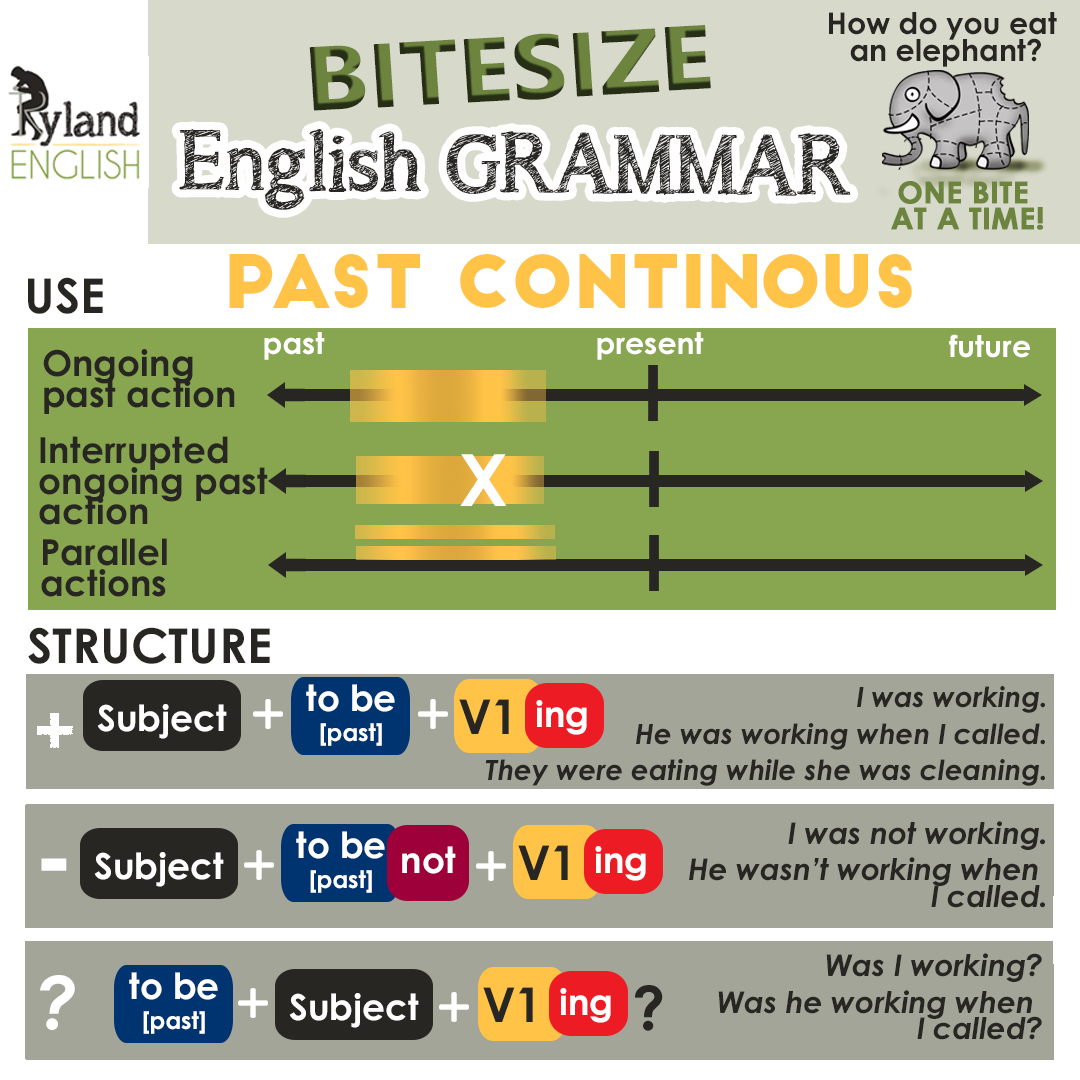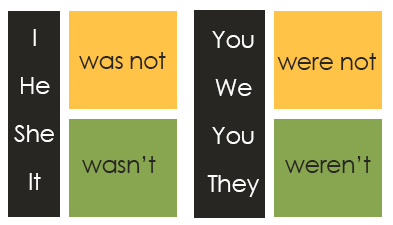
Verb tenses… hmmm… the least exciting of all grammar topics. At least to me!!
So let’s try and make it a bit more interesting by exploring ways to use it in context.
In real life, English native speakers do not consider what tense they need to use, they just know!
To help you remember we will explore when and how to use them… Ready?
The PAST CONTINUOUS (also known as the PAST PROGRESSIVE) can be used to talk about ongoing actions and events that happened in the PAST.
How to use the PAST CONTINUOUS to talk about ongoing actions…
It is a tense we use most often to talk about actions and events happening in the past for a limited time, which could be minutes or months, but which are not happening now. Sometimes they are written with time indicators (e.g when, earlier, at that time, etc.).
Someone was trying to break into your car.
This calculator wasn’t working at the time.
Was she looking for her dog earlier?
To talk about parallel actions that were happening at the same time or an action that was interrupted by a shorter action/event in the PAST SIMPLE. It is common to use ‘when’ or ‘while’ to show that two actions are happening.
Mary was walking down the street, looking for her dog.
He wasn’t cleaning when the phone rang.
Why were they shouting when the noise stopped?
To ‘set the scene’; describing what was happening while telling a story. A scene can often contain several parallel or chained actions or events.
The sun was shining, the birds were singing and she was feeling happy.
Tony was running on the sidewalk, listening to music. Suddenly, he heard a loud bang.
To talk about temporary habits or habits that happened more often than normal but started and stopped in the past. Time indicators (e.g. always, forever, etc.) are often used.
Kate was always leaving wet towels on the floor.
I wasn’t constantly causing trouble!
Were they generally taking you to nice places?
HOW TO PUT IT TOGETHER TO MAKE SENTENCES?
The PAST CONTINUOUS is basically made by using ‘to be’ and the past form [V2] +ING form of the verb [which is what makes it ‘continuous‘] describing the action or event.
Affirmative sentences
For sentences that are ‘positive‘ or affirmative, you can use ‘was/were’ and the V1 form with +ING at the end. See our lesson on -ING spelling rules, because of course there are rules and exceptions for that as well 😏!!

Warning! ‘to be’ is an irregular verb;
I was We were
You were You were
He/She/It was They were
Negative sentences
For sentences that are ‘negative‘ you use the same components, ‘was/were’ and the V1 form with +ING at the end, but you have to add the ‘not’ after the auxiliary ‘to be’.

TOP TIPS!!!

Questions
For questions you also use ‘was/were’ but you must swap it 🔄 with the person/entity responsible for the action [the subject].

To make a negative question simply add a ‘not’ after ‘was/were’ and before the person/entity responsible for the action [the subject].
Weren’t you traveling to New York this month?
Wasn’t he watching your son last night?
And that is it! It wasn’t too bad after all! 😎
Here you have some online games to help you practice what you have learnt! ENJOY!!
There is a nice collection of all types of PAST CONTINUOUS exercises on this page!!
